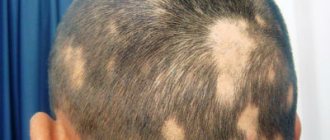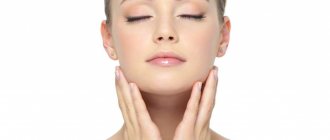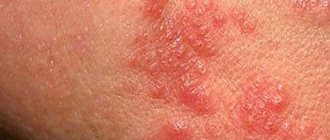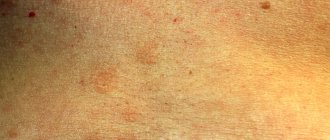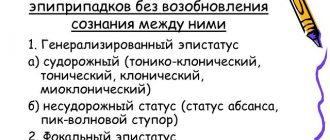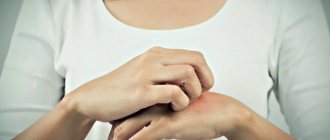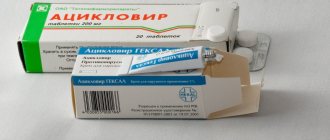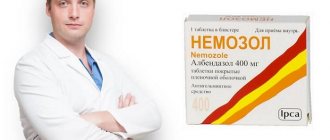The most common dermatological diseases include lichen - an infectious lesion of skin areas caused by the action of microscopic fungi or viruses. The danger of lichen is that it is easily transmitted by contact from person to person or from sick animal to person and has several varieties that require a special approach to treatment.
What kind of lichen occurs, what type of therapy is more effective in each specific case, how to avoid complications - this will be discussed further.
Pathogens and carriers of lichen
The content of the article
Dermatologists distinguish several types of lichen, caused by different pathogens.
Most often, the appearance of lichen on human skin is initiated by fungi:
- zooanthropophilic - transmitted to humans from an infected animal, including from pets;
- anthropophilic - live only on human skin;
- geophilic - live in the soil and come into contact with human skin upon contact with the ground.
In addition to fungi, viruses are often the causative agent of lichen. Their cunning lies in the fact that they can live asymptomatically in the human body for a number of years and become more active when the immune system is weakened. This is exactly how, for example, those familiar to many with herpes or shingles behave.
Measures to prevent the disease
Since there can be many causes of lichen infection, it is impossible to completely exclude the possibility of the disease. However, compliance with preventive measures will reduce the risks. Prevention of lichen includes:
- timely treatment of acute respiratory diseases;
- compliance with hygiene procedures;
- taking a vitamin complex;
- increasing the level of immunity;
- use of shampoos with antifungal gels;
- hardening of the body;
- providing quality oral care, treatment of caries, gums and throat diseases;
- proper nutrition;
- avoiding contact with people infected with the fungus;
- vaccination of pets and periodic examinations at a veterinary clinic;
- giving up bad habits (smoking, alcoholism);
- preventing hypothermia of the body.
When diagnosing a chronic form of lichen, it is recommended to periodically visit a dermatologist’s office in order to identify possible foci of the disease.
Types of lichen
In order to cure lichen, it is not enough to make a general diagnosis. It is equally important to promptly determine the type of lichen, since each is characterized by its own symptoms and requires its own treatment.
Dermatologists distinguish the following types of lichen:
- shearer;
- encircling;
- pityriasis;
- pink;
- red flat;
- tubular;
- solar;
- scaly.
Only a competent dermatologist can draw a line between them and correctly prescribe a set of therapeutic measures. Therefore, under no circumstances should you self-medicate. The surest way is to go to the clinic at the first sign of deprivation.
Now about what changes in the skin should alert a person.
Diagnosis of pityriasis
If you find suspicious spots on the skin, you should promptly contact a dermatologist. During a visual examination, the doctor assesses the nature of the rashes, their shape, size, location on the body and is able to make the correct diagnosis. After dermatoscopy, the following studies are additionally carried out: biochemical tests of blood and urine, RMP (microprecipitation reactions with antigens), skin scrapings from injured areas.
A more complex diagnosis is carried out if the skin disease lasts more than six weeks. In these cases, discharge from the affected lesions is sent for bacterial culture. A biopsy and subsequent histological studies will help make the correct diagnosis. In order to distinguish Zhiber's disease from other types of lichen, toxicerma, psoriasis, complicated syphilis and other pathologies, fluorescent diagnostics are carried out, scrapings are checked for the presence of pathogenic fungi, RPR tests are done for syphilis, etc.
Ringworm
The source of trichophytosis - this is the second name for ringworm - can be any of the fungi that primarily affects the hairy parts of the body (head and beard), neck, shoulders, face. The symptoms of this type of lichen are usually as follows: first, swollen pink or red spots with clearly defined edges appear, then the edges of the spots become covered with bursting blisters and an itchy crust, and finally, the center of the spot begins to peel off, and the hair in the affected area breaks off and thins.
Ringworm is diagnosed using a Wood's lamp. If the disease is confirmed, the patient - children often suffer from ringworm - is protected from contact with others and is prescribed complex therapy, including taking special tablets (for example, Terbinafine) and the use of antifungal ointments. In particularly difficult cases, it is possible to take hormone-containing agents that help stop the inflammatory process on the skin.
Epidemiology of microsporia
Microsporia affects mainly children of primary and school age. The high incidence of ringworm in children is associated with an imbalance of cellular-humoral immunity, a reduced concentration of bactericidal components of the blood serum and a reduced level of enzymes in the hair follicles that destroy pathogens. Upon reaching puberty, the disease disappears.
Zoophilic microsporia
In our latitudes, among all species, zoophilic microsporia accounts for 90 - 97%. The cause of the disease is the fungus Microsporum canis, which is transmitted from sick kittens, cats, dogs (through contaminated wool), less often - from humans, as well as through objects containing pathogen spores (combs, toys, bedding and hats). Children often become infected when playing in the sandbox. The source of infection in most cases is stray animals.
The causative agents of ringworm are highly resistant in the external environment. From 7 to 10 years they remain viable on skin scales and hair. They can be stored in soil (sandboxes) for more than 1 month. The incubation period is 5 - 7 days.
Rice. 3. Ringworm in a dog.
Rice. 4. Ringworm in cats and kittens.
Anthropophilic microsporia
In our latitudes, among all types of microsporia, anthropophilic microsporia accounts for about 2% of cases. The cause of the disease is Microsporum ferrugineum (more often) and Microsporum audouinii (less often). The infection is transmitted only from a sick person and his personal belongings infected with fungi - hats, combs, clothes, towels, bed linen and hairdresser's tools.
Rusty microsporum (Microsporum ferrugineum) is the most infectious and virulent of all pathogenic fungi known today. The spread of the disease in children's groups is rapid and requires immediate implementation of intensive anti-epidemic measures.
Children aged 5 to 14 years old, mostly boys, are most often affected, which is associated with transmission of infection during haircuts. The disease disappears upon reaching puberty. The incubation period for Microsporum ferrugineum infection is 4 - 6 weeks.
Microsporum audouinii is most common on the African continent. The pathogen may be brought into the Russian Federation by tourists and migrants. Mostly children of preschool age are affected.
Rice. 5. A focus of microsporia on the skin of a person’s hand.
Geophilic microsporia
This type of disease develops when persons cultivating the soil become infected with the soil saprophyte fungus Microsporum gypseum.
Rice. 6. Microsporia in adults.
Herpes zoster
It is caused by a virus that remains “dormant” in the human body for the time being. It appears in the form of fluid-filled blisters, usually located in the intercostal part of the body. Associated symptoms of herpes zoster: pain (caused by damage to the intercostal nerve endings) and itching of the skin in the affected area; sometimes fever with chills, headaches.
Treatment of herpes zoster is complex. Since the blisters of shingles burst, they are initially treated with brilliant green. And to lubricate the crust that forms in their place, use dermatol ointment. In parallel, the doctor may prescribe antipyretic, painkillers and antiviral drugs, quartz and laser therapy.
Folk
Having dealt with drug treatment, it’s worth talking about “grandmother’s methods.” Sometimes their advice for quickly treating lichen on the hands can come in handy.
There are such popular recipes for the treatment of lichen in folk conditions:
Onion juice. Rub intensively into the source of infection 2 times a day. The rim is rubbed especially carefully. The procedure continues until the symptoms of the disease disappear completely.
If lichen has affected the palms, then burdock oil is rubbed into them until completely absorbed. It is not recommended to wash your hands after the procedure for about 30 minutes.
You need to burn the newspaper, make a liquid from the ashes, add a little water and rub it on the affected areas.
All these simple procedures answer the question of how to easily cure lichen at home.
Pityriasis versicolor
It is also called multi-colored, because the small pink - and sometimes greenish - rash that appears on the back, stomach, shoulders, and chest changes color and turns brown as the disease develops. Moreover, on tanned skin (in summer) these spots appear discolored, but on white skin (in winter), on the contrary, they look quite dark.
Diagnosis of pityriasis versicolor can be carried out by a specialist who has resorted to microscopic examination of the dermis, Balzer iodine test, and Wood's lamp. He will also prescribe a special drug treatment (with the help of Orungal, Mycozolon, etc.) that can kill the fungus that causes the disease.
With proper therapy, pityriasis versicolor can be eliminated quite quickly (although without treatment, the disease drags on for many years). Additionally, the patient is recommended to adjust their lifestyle (a concomitant cause of this type of lichen may be increased humidity or air temperature), and carry out a complete treatment of clothing and linen.
Medication
Drug treatment involves visiting a dermatologist, followed by a series of tests and prescription of medications.
- Stye: causes, symptoms and treatment
Ringworm on the face - types, causes, symptoms, treatment and prevention. 115 photos and videos of disease manifestations
Ringworm on the leg - 125 photos of what lichen looks like, common lesions and video tips on choosing a treatment method
The following groups of drugs are widely used:
- antibiotics;
- hormonal ointments;
- antihistamines;
- vitamins.
Lichen rosea (or Zhibera)
A little-studied type of disease that usually develops against the background of a weakened immune system in the autumn or spring season. The risk group in this case consists of girls who have a hormonal imbalance in their body.
The manifestation of lichen is the appearance of round or oval pink and light brown spots on the chest, shoulders, back, sides, and skin folds. Dermatological changes, accompanied by itching and flaking of the skin, may go away on their own within a few weeks, however, when the first signs of the disease appear, it is recommended to consult a doctor to rule out the presence of syphilis similar in symptoms.
Symptoms
The first symptoms of lichen on the hands are the following:
- itching, discomfort and burning in areas of future lesions;
- the appearance of weeping watery blisters of various shapes;
- peeling of the skin;
- changes in the structure of the skin due to the appearance of plaques on it.
Lichen ruber planus
Flat multi-colored (from pale pink to purple) nodules of lichen red often appear on the mucous membranes, nails (they crumble), and delicate skin of the chest and abdomen. Their appearance is accompanied by severe itching, which, as a result of scratching, leads to the rapid growth of foci of skin damage.
Dermatologists find it difficult to determine the cause of the appearance of lichen red, but note that it is quite common in patients with diabetes, as well as those suffering from diseases of the stomach, liver, and biliary tract. Moreover, women over 40 years of age are primarily at risk.
Tinea tubularis
Malasezzia is the name of the fungus that causes tubular lichen. This fungus can live in the human sebaceous glands for a long time without revealing itself in any way. Under certain conditions: for example, a decrease in immunity or an imbalance in the acid balance of the skin, severe hypothermia or excessive sweating, endocrine disorders or the development of certain chronic diseases - it begins to multiply intensively.
As a result, small flaky spots appear on the skin, which gradually grow and merge into one large spot. And although the victim practically does not feel itching or pain, he should not postpone a visit to the doctor.
After diagnosing the disease (methods used - scraping test, iodine test, use of a Wood's lamp, etc.), the dermatologist prescribes local or complex antifungal drugs.
Ringworm solar
Under the influence of sunlight, excessive sweating, abuse of solariums and antibacterial agents, uneven, flaky dark spots may appear on the skin. Their occurrence is provoked by a fungus that multiplies on the dermis as a result of a violation of its acidity. Gradually, the spots grow to significant sizes, which causes aesthetic discomfort to a person: they clearly stand out against the tan. And although solar lichen is rarely accompanied by itching and pain, it requires mandatory therapy.
As a rule, solar lichen is diagnosed quickly: it is often enough to conduct an iodine test or use a Wood's lamp. At the initial stage of the disease, local antimicrobial drugs help well; in cases where the disease is advanced, the doctor prescribes complex therapy.
Ringworm scaly
The causes and treatment of this lichen, better known as psoriasis, are not fully understood. However, it is noted that it appears more often in people suffering from diseases of the endocrine and nervous systems and prone to alcoholism.
Psoriasis is a chronic disease, often occurring latently, i.e. is hidden. First, small reddish spots appear on the skin - most often the bends of the legs and arms, lower back and buttocks, causing severe itching due to dryness. Gradually, the spots grow and turn into a lesion that affects a large area of the skin. The peculiarity of psoriasis is that when the plaque is removed, the lichen begins to bleed.
It is necessary to treat scaly lichen under the supervision of a doctor, who will select the necessary topical medications (when applying them, you must strictly follow the instructions), and, if necessary, prescribe antibiotics.
Prevention
To prevent the occurrence of the disease, the following rules must be observed:
- Limit contact with homeless animals.
- Eliminate bad habits from your life that reduce immunity (smoking, alcohol).
- Strengthen your immune system (exercise, personal hygiene).
- Start eating right (exclude fatty, spicy, salty foods).
- Avoid heavy nervous stress.
Are all types of lichen contagious?
Many people believe that absolutely all types of lichen are dangerous to others. Meanwhile, this is not entirely true. So, with pink, ringworm or shingles, the patient will really need to be isolated. But, for example, pityriasis or scaly ones are not dangerous for others.
And this is another reason why any change in the skin should be the reason for going to a specialist - only he will be able to correctly determine the type of lichen, assess the degree of its danger, give recommendations for treatment, and finally select a set of medications and therapeutic measures aimed at including general strengthening of the body.
Classification
Ringworm is an unpleasant disease, but it can be completely cured. There are even some types of lichen that do not require treatment and go away on their own.
In 2022, the most common types of lichen in humans are (see photo):
- Pityriasis, it is also known as "colored" or "variegated".
- Pityriasis rosea or Gibert's disease.
- Ringworm (aka “hairworm” or trichophytosis).
- Lichen planus, affecting the skin, mucous membranes, and, less commonly, nails.
- Scaly, popularly known as psoriasis.
- Shingles, sometimes called herpes.
- Microsporia. A highly contagious form that is often confused with ringworm.
Each type is caused by a specific pathogen and is subject to strictly defined treatment. The consequence of untreated lichen can be permanently disfigured skin or lost hair.
